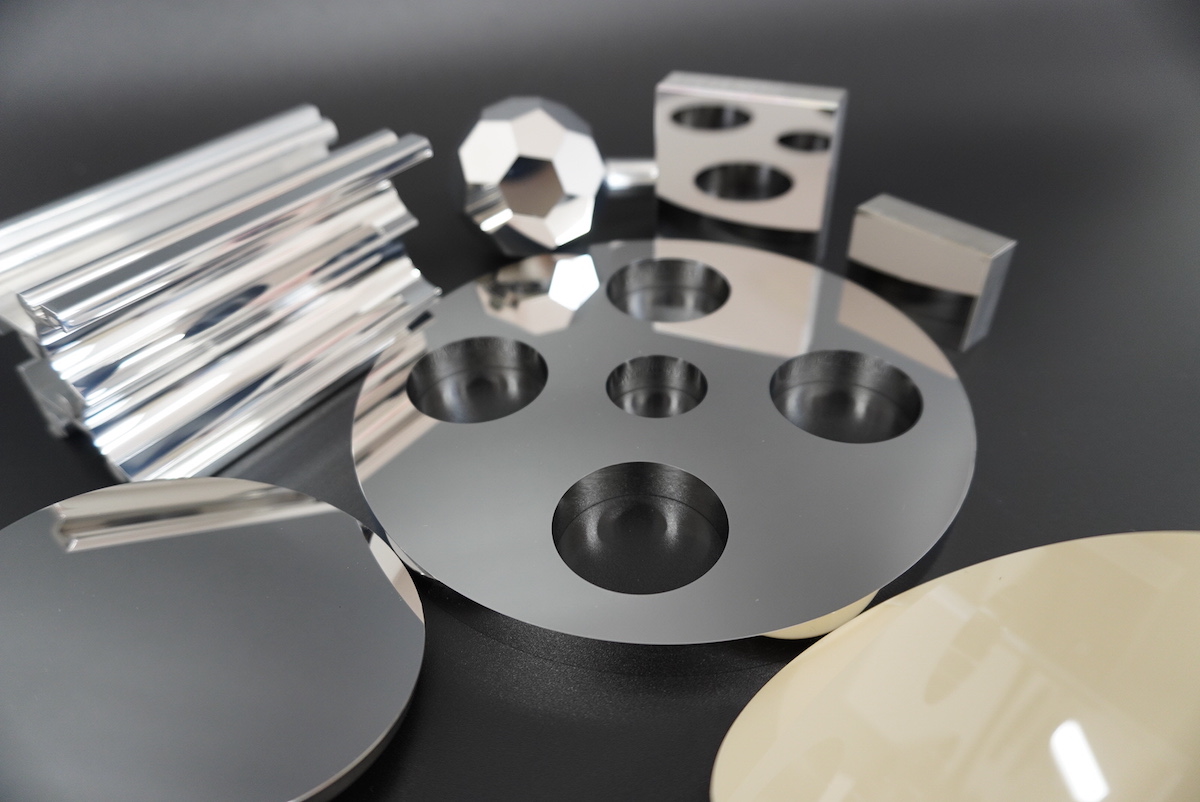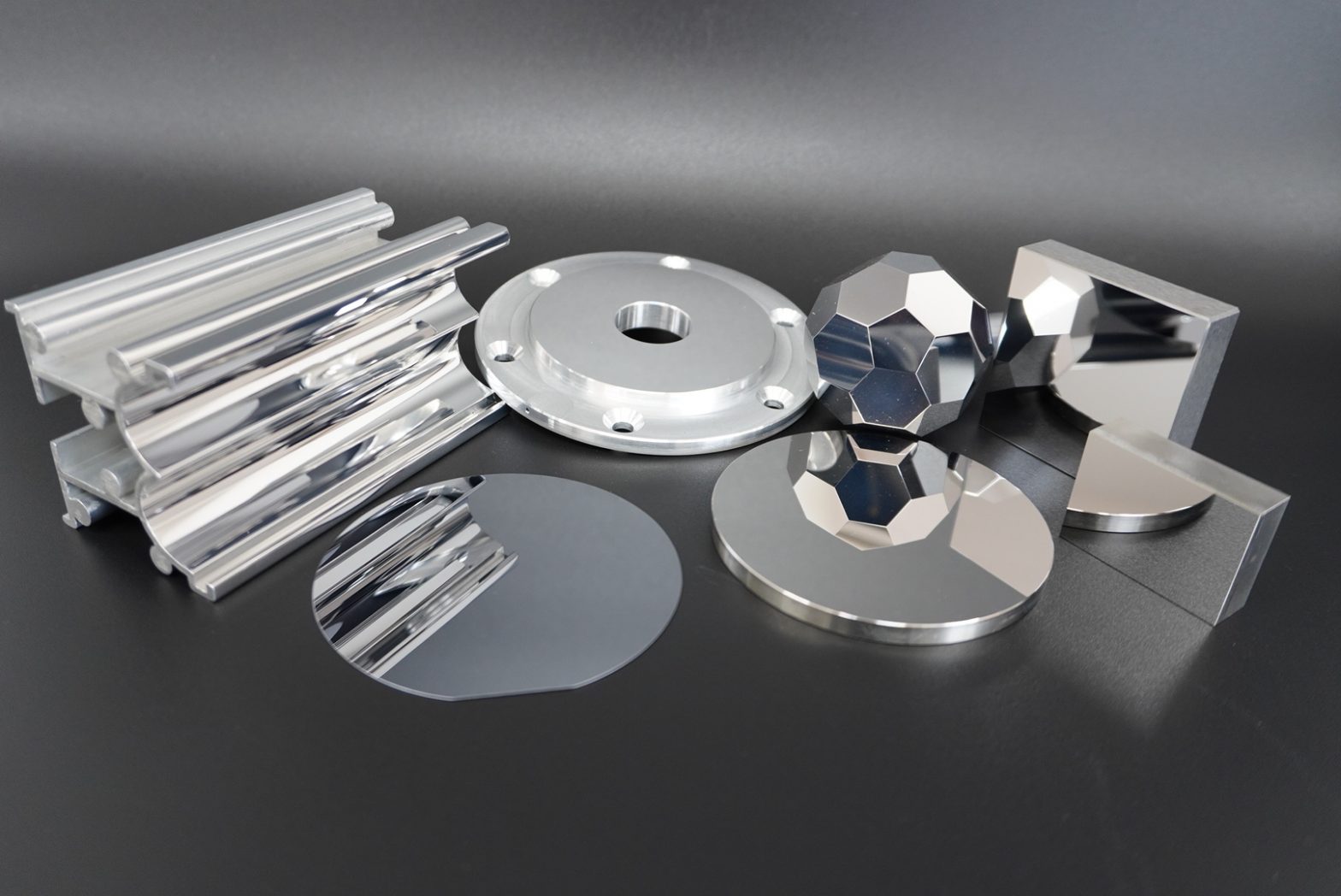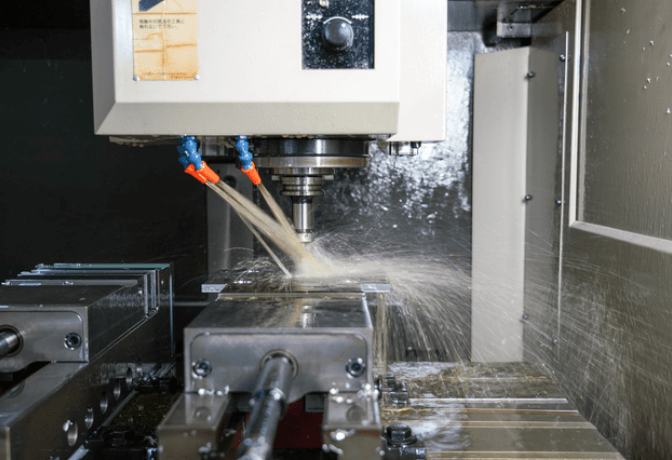
Mold Processing
On this page, we will explain the molds manufactured at TDC, an overview of mold processing, and the types and processes of mold manufacturing.
Contents
What is mold
A mold is a general term for a formwork made of metal, and by pouring materials such as resin, rubber, and metal into it, it is possible to “make a large number of products of the same shape continuously.”
They are used in a wide range of applications, from large items such as automobile body parts and aircraft parts to small items such as personal computer and smartphone parts, and play an important role in many manufacturing sites.
It is also known as the “King of Production Engineering” because the precision of molds greatly affects the quality of industrial products, and the “Mother of Manufacturing” because it is capable of stable mass production, supporting Japan’s economic growth. It has become one of the important know-how of the manufacturing industry.
As the name suggests, everything we see in our daily life is made using molds. For example, automobiles are manufactured by pressing sheet metal (metal plates) with molds, and computers and home appliances that combine metal and resin can all be mass-produced thanks to molds.
Need for mold
Molds are indispensable in all manufacturing industries, from vehicles such as automobiles, airplanes, and trains as mentioned above, home appliance parts, rubber products such as tires, and glass products such as beer bottles.
For example, if a single part of a smartphone is manufactured using a method other than a mold, it will take time, it will be difficult to ensure uniform quality, and the cost will be very high.
Thanks to molds, we are able to achieve quality stability, cost reduction, short delivery times, product diversification, small lot production, environmental measures, and weight reduction.
Flow of mold polishing at TDC
Mold polishing at TDC is performed in the following process.
- Hearing : Based on the specifications and drawings provided by the customer, we ask about the current problems and propose improvement measures
- Quotation : We will submit a quotation based on the contents of the hearing.
- Grinding : We use grinding and polishing to achieve the required accuracy.
- Washing : Washing is carried out using the most suitable method according to the specifications.
- Inspection : Inspection data (*) is attached according to specifications.
- Shipping
(*)TDC uses excellent high-performance measurements from reliable manufacturers.
TFor TDC’s quality assurance, please refer to the Quality Assurance page.
Please use TDC’s polishing technology for mold polishing
At TDC, we maintain the world’s highest level of polishing processing technology in the fields of ultra-precision lapping and ultra-precision polishing through our unique technology development and accumulation of know-how.
Please use TDC’s polishing technology not only for general mold polishing, but also for polishing molds that require high precision.
*In addition, the TDC official YouTube channel introduces molds using STAVAX materials. Please take a look.
with nano-level precision polishing.
and production from single units to mass production.
What is a die, mold?
Molds are sometimes called “die” or “mold” depending on the application.
The name may change depending on the manufacturer and site, and the following is an example.
die
A die is an “open” mold that presses the mold against the metal to form it. In some cases, the receiver for the lower die is called a “die” and the upper die is called a “punch”.
In addition, the following molds may also be called dies.
- Press dies used to process metal plates
- a mold used in the manufacture of coins
- Die for extruding resin material into rod shape
- forging die
mold
A mold refers to a “closed mold”, in which metal or resin is poured into the mold for molding.
In addition, the following molds may also be called molds.
- Male and female dies used for injection molding to press in molten resin
- Casting by pouring molten metal
- mold for die casting
- Molds for compression molding of metals and resins
- Mold for powder molding that compresses and solidifies metal powder
types and classification of mold
There are various types of molds, even if they are lumped together.
Specifically, there are the following types.
Press mold
Plate-shaped materials such as steel plates and non-ferrous metals are placed between the dies attached to the press machine, and by sandwiching them from above and below, the materials are subjected to plastic working and punching to form them. There are classifications such as punching dies, bending dies, drawing dies, and compression dies, and it is also possible to rationalize multiple types of processing by using progressive presses. It has a wide range of uses, from automobile body parts to electrical product parts, daily necessities, and miscellaneous goods.
Single function
A single-purpose type is a press die used for single-process processing (single-shot press), and can perform “one” processing such as punching, drilling, and bending in a single press.
Single-purpose dies are further subdivided by function, such as “blank dies,” “cutting dies,” and “bending dies.”
compound type
Composite dies are press dies that are used for single-process processing (single-shot presses), just like single-purpose dies. increase.
Although there is a drawback that the strength is weak due to the complexity of the mold structure, it is possible to significantly reduce the number of man-hours.
Progressive type
Progressive dies are press dies used in progressive processing. Multiple dies are built into a single die, allowing for automatic feeding and sequential pressing.
It has the highest productivity among press dies, and it is possible to mold a finished product with a single die.
transfer mold
Transfer dies are press dies used in “transfer processing”, and are made by adding transfer and positioning functions to single-purpose dies.
It can also handle drawing, which is difficult with progressive dies.
press line mold
Press line dies refer to press dies used in robot press lines.
In addition to being ideal for unmanned automated lines, it can also handle large presses that are difficult with progressive dies and transfer dies.
punch die
Punch dies are dedicated dies that are set in turret punches and press brakes, and are often used as a set with the lower die (receiving side).
By pressing a punch against the metal, processes such as punching, bending, and drawing are performed. Even in ordinary press dies, the upper die is sometimes called a punch.
die casting mold
A die casting mold is a mold used in die casting.
Casting using die casting molds is called “die casting” or “die casting”, and is used in various industries such as automobiles, home appliance parts, and building materials.
mold for plastic
Plastic molds are used for resin molding such as injection molding, compression molding, blow molding, and vacuum molding.
Among the many types of molds, plastic molds are said to be the most produced.
Plastic molds are mainly used for the following products.
- Electrical products
- OA equipment
- Auto parts
- PET bottles
- Film-shaped, bag-shaped, and rod-shaped products
injection mold
injection mold
Injection molds are molds for molds used in resin injection molding, metal powder injection molding, MIM (powder metallurgy technology), etc.
Molten plastic or metal powder is injected into a mold and molded.
casting mold
Casting molds are mainly used for the following castings.
- shelf mold
- Lost wax
- gravity casting
- pressure casting
die casting mold
A type of casting mold that is formed by press-fitting molten aluminum alloy or zinc alloy at high temperature.
It is used to manufacture parts for automobiles, precision machinery, electrical products, as well as bodies for cameras and power tools.
Simple mold
A simple mold refers to a mold used for product prototyping and testing before mass production.
It is often made of aluminum or zinc alloy, and while the production cost is low, the durability is low and the number of times it can be processed is limited.
Composite mold
Composite molds refer to molds used to reduce man-hours on production lines.
Multiple materials and parts can be set inside the mold, and multiple processes can be reduced with a single press.
glass mold
The mold used to mold the glass material is called a glass mold.
There are press dies and press dies, which are the same as general dies, and blow dies (spinning dies and blow dies) that take advantage of the characteristics of glass.
rubber mold
A mold for molding natural rubber or synthetic rubber is called a rubber mold.
It can be divided into direct pressure molding and direct pressure injection molding.
Materilal of mold
The materials used for molds vary depending on the products and parts to be mass-produced.
In general, molds are subjected to a large amount of pressure and impact. For this reason, tool steels such as alloy tool steel with high toughness and high-speed tool steel (HSS) with excellent wear resistance and heat resistance are used. There are also cases where ceramics are used.
Examination of materials and materials
For example, in the case of plastic molds, elasticity, toughness, dynamic strength, and thermal conductivity vary greatly depending on the type of material and its shape.
Therefore, it is necessary to select the material of the mold based on the balance of durability, corrosiveness, friction, and cost required for the material.
Mold design and processing method
Mold design and processing preparation
Before actually processing the mold, we first prepare the considerations and decisions in the design and the processing program.
In addition to confirming whether the design satisfies the basic requirements, we also determine size tolerances, surface roughness, materials and heat treatment methods.
As soon as the 3D data for mold design is completed, we use software to perform simulations with fluids such as molten resin.
We aim to complete the mold while verifying and reconsidering details.
Basic machining on a machining center
When manufacturing a mold using a machining center, the main part of the steel material of the mold is generally cut and ground to bring it closer to the desired shape.
- Cutting…In addition to machining centers, cutting tools such as NC milling machines, jig boring machines, lathes, general-purpose milling machines, general-purpose milling machines, and drilling machines are used for cutting unnecessary parts of steel materials.
- Grinding…Scraping the surface on a rotating whetstone. The surface roughness of the mold is an important factor related to the accuracy of the surface of the molded product in the mold. In order to obtain the required surface roughness, we perform grinding using surface grinders, forming grinders, jig grinders, etc.
- Electrical Discharge Machining: Arc discharge is performed between the mold material and the electrode, and the details of the mold surface are melted and removed. Generally, wire-cut electrical discharge machines and electrical discharge machines are used.
- Assembly/Finishing: Assemble the various mold parts that have been processed, and check the final interference between the upper and lower dies and the sliding part. In addition to finishing to the required surface roughness, a high-quality mold is finished through visual and tactile confirmation and careful manual work.
(参考サイト:はじめの工作機械|金型とは)
with nano-level precision polishing.
and production from single units to mass production.
Related page
- What is a chuck table? | Basic information and description of types, Processing accuracy at TDC
- Copper polishing
- Precision processing of crystal materials and glasses
- Polishing after thermal spraying
- Mirror Finishing/Mirror Polishing
- Sapphire polishing
- Polishing of plastic/acrylic resin
- Polishing after surface treatment/coating
- Precision parts processing
- KEYENCE measuring instruments used at TDC
- Precision Cleaning Service
- Symbol used for polishing
- SUS (stainless steel) material test piece/specimen
- Polishing of SiC
- Polishing of titanium
- Cylindrical grinding/cylindrical polishing
- Mold Processing
- Precision machining of ceramics
- ガラスエポキシ(ガラエポ)の精密加工
- Type of polishing process
- 真鍮の精密加工・研磨加工
- What is the accuracy that can be achieved by polishing?
- Principle of polishing process
- Semiconductor Wafer Cleaning
- Ultrapure Water Cleaning
- Bruker “Dimension Icon”
- Talysurf
- Talyrond
- Dial gauge
- Precision processing of resin and plastic
- Polishing process for Resin
- Precision Measurement
- Mirror-finishing for aluminum
- Mirror-finishing for plastic/acrylic resin
- Wafer Cleaning Equipment
- Mirror Polishing for Stainless Steel/SUS304
- Metal polishing process
- Mitutoyo measuring instrument used in TDC
- Polishing of Aluminum
- Optical Nano Gauge
- TDC’s precision machining
- 微細加工とは? | 基礎知識と加工方法の解説
- What is CMP
- What is polishing?
- About Lapping and Polishing




